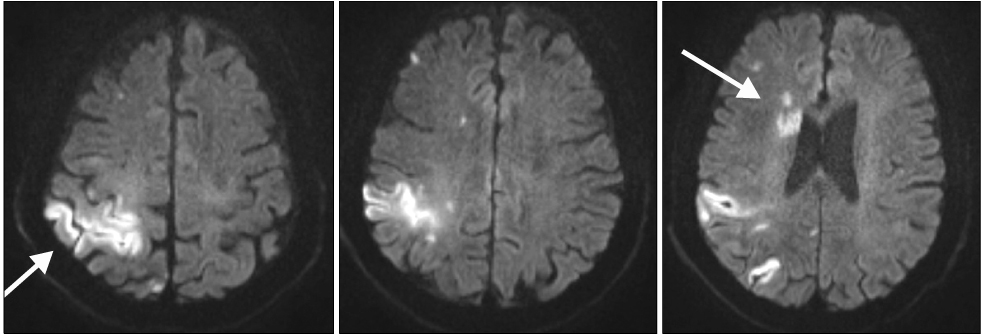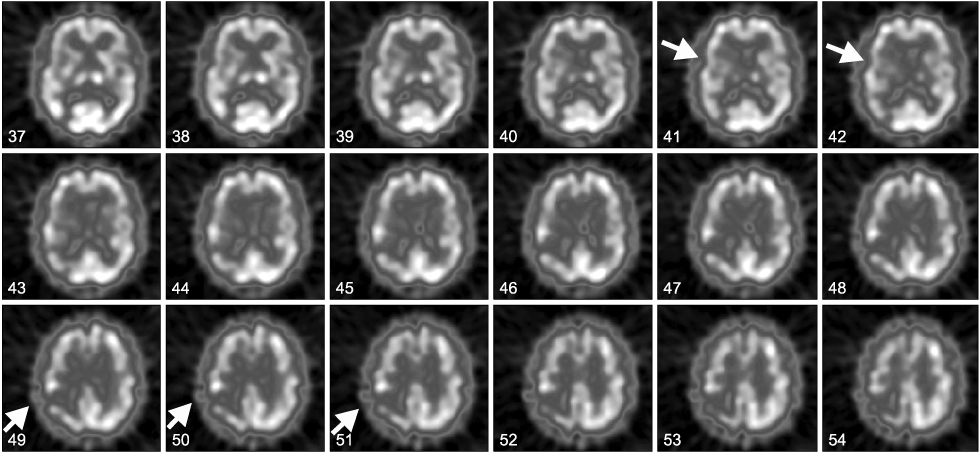Brain Neurorehabil.
2013 Mar;6(1):41-45. 10.12786/bn.2013.6.1.41.
Reduplicative Paramnesia after Right Frontoparietal Infarction -A Case Report-
- Affiliations
-
- 1Department of Physical Medicine and Rehabilitation, Korea University College of Medicine, Korea. rmpyun@korea.ac.kr
- KMID: 2270738
- DOI: http://doi.org/10.12786/bn.2013.6.1.41
Abstract
- Reduplicative paramnesia (RP) is one of delusional disorders characterized by false belief that a familiar place, person, or object had been duplicated. There have been several hypotheses about anatomical basis of RP, and right hemispheric pathology combined with or without diffuse bifrontal pathology is commonly accepted. We report a 74-year-old man who developed reduplication of place and person after right frontoparietal cerebral infarction. On the neuropsychological examination, the patient showed marked deficit in several parts of cognition including attention, memory and execution. In accordance with the literature, our clinical report suggests that RP is associated with right parietal and frontal lesion which causes deficits of visuospatial attention, memory and integration, and also emotional confusion during hospitalization.
Keyword
MeSH Terms
Figure
Reference
-
1. Devinsky O. Delusional misidentifications and duplications: right brain lesions, left brain delusions. Neurology. 2009. 72:80–87.2. Pick A. Clinical studies: III. On reduplicative paramnesia. Brain. 1903. 26:260–267.3. Murai T, Toichi M, Sengoku A, Miyoshi K, Morimune S. Reduplicative paramnesia in patients with focal brain damage. Neuropsychiatry Neuropsychol Behav Neurol. 1997. 10:190–196.4. Forstl H, Almeida OP, Owen AM, Burns A, Howard R. Psychiatric, neurological and medical aspects of misidentification syndromes: a review of 260 cases. Psychol Med. 1991. 21:905–910.5. Kapur N, Turner A, King C. Reduplicative paramnesia: possible anatomical and neuropsychological mechanisms. J Neurol Neurosurg Psychiatry. 1988. 51:579–581.6. Ruff RL, Volpe BT. Environmental reduplication associated with right frontal and parietal lobe injury. J Neurol Neurosurg Psychiatry. 1981. 44:382–386.7. Hakim H, Verma NP, Greiffenstein MF. Pathogenesis of reduplicative paramnesia. J Neurol Neurosurg Psychiatry. 1988. 51:839–841.8. Pisani A, Marra C, Silveri MC. Anatomical and psychological mechanism of reduplicative misidentification syndromes. Neurol Sci. 2000. 21:324–328.9. Budson AE, Roth HL, Rentz DM, Ronthal M. Disruption of the ventral visual stream in a case of reduplicative paramnesia. Ann N Y Acad Sci. 2000. 911:447–452.10. Yamada M, Murai T, Ohigashi Y. Postoperative reduplicative paramnesia in a patient with a right frontotemporal lesion. Psychogeriatrics. 2003. 3:127–131.
- Full Text Links
- Actions
-
Cited
- CITED
-
- Close
- Share
- Similar articles
-
- Ocular Motor Apraxia after Sequential Bilateral Striatal Infarctions
- Secondary Cicatricial Alopecia due to Morphea Involved in Frontoparietal Area through the Eyebrow
- Idiopathic Omental Infarction to Be a Rare Cause of Acute Abdomen: A Case Report
- Infarction of Wandering Spleen with Torsion of Its Pedicle: A case report
- A Case of Cerebral Infarction and Chronic Subdural Hematoma in Essential Thrombocythemia



